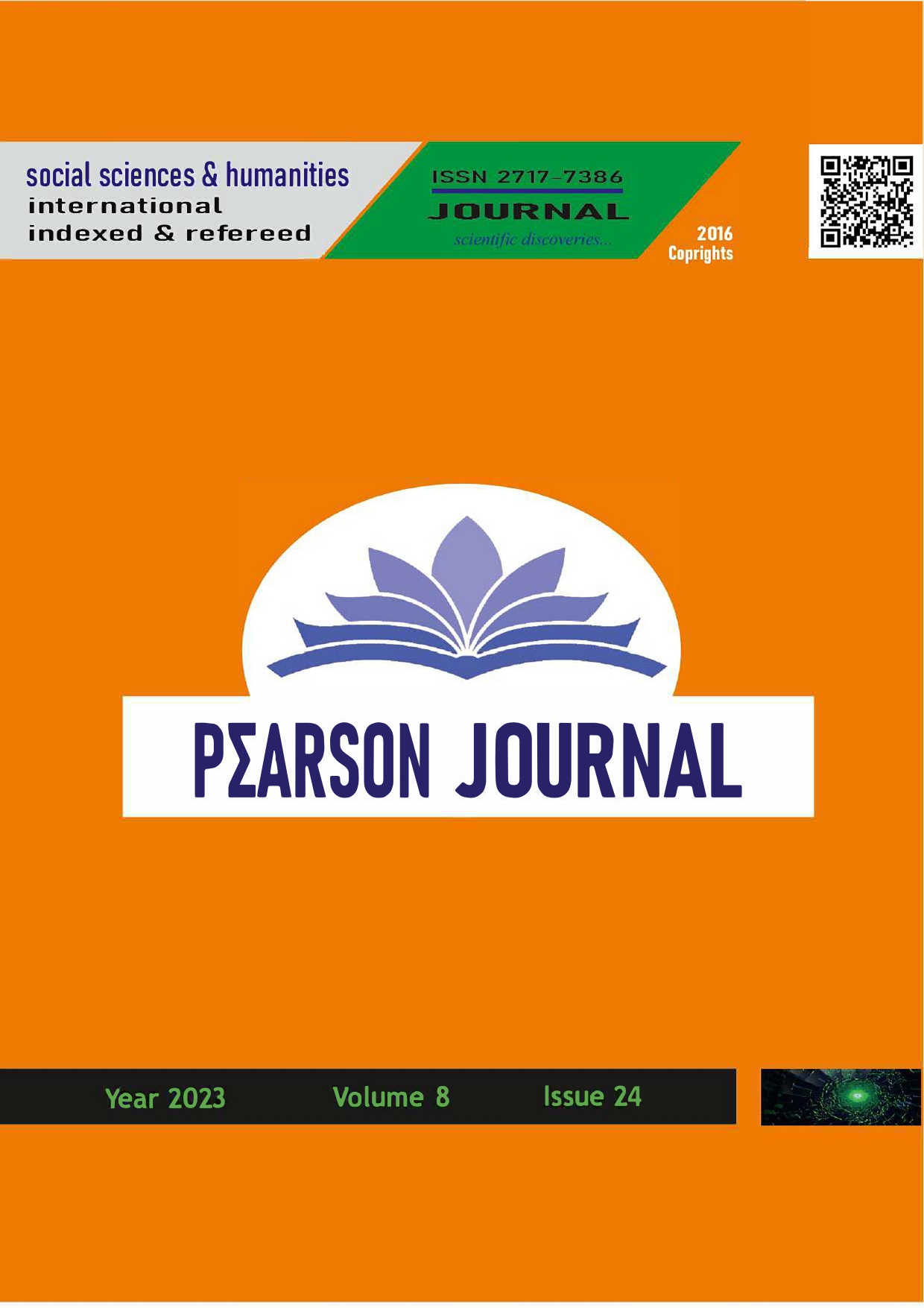A Review on Bulimia Nervosa and Cognitive Behavioral Therapy: A Case Report
DOI:
https://doi.org/10.5281/zenodo.8077925Keywords:
Bulimia Nervosa, Cognitive Behavioral Therapy, Eating DisorderAbstract
Eating disorders are a group of disorders that affect people both psychologically and physically. The subspecies are; It is classified as anorexia nervosa (AN), bulimia nervosa (BN), binge eating disorder (BED), pica, withdrawal disorder and restricted food intake disorder. Bulimia nervosa; It is a subtype of eating disorder characterized by recurrent episodes of binge eating and loss of sense of control, as well as compensatory behaviors after eating due to fear of gaining weight. When we look at the prevalence of bulimia nervosa, it is known that it is more common especially in young women. It is known that cognitive behavioral therapy (CBT), which argues that one's thoughts cause behaviors, is effective in its treatment, as well as many treatment approaches. In this case study, the treatment process with cognitive behavioral therapy techniques applied to a 22-year-old female client with bulimia nervosa symptoms was explained. A cognitive-behavioral treatment plan lasting 13 sessions was applied to the client, who stated that she started a restrictive diet with weight gain while she was preparing for university, and as a result, she experienced binge eating attacks and tended to compensatory behaviors. It is aimed to regulate the deteriorated eating behavior of the client and to change their dysfunctional thoughts.
References
Adan, R. A., & Kaye, W. H. (Eds.). (2011). Behavioral neurobiology of eating disorders (Vol. 6). Springer Science & Business Media.
American Psychiatric Association (2013). Diagnostic and statistical manual of mental disorders. 5th ed. Arlington: American Psychiatric Association: 329-354.
Aytaç, H. M., & Hocaoglu, Ç. (2016). Bulimiya Nervoza ile Birlikte Yaşamak: Bir vaka Sunumu. Journal of Mood Disorders (JMOOD), 6(3), 158-63.
Bulik, C. M. (2002). Anxiety, depression and eating disorders. Eating disorders and obesity: A comprehensive handbook, 2(1), 193-198.
Bulik, C. M., Devlin, B., Bacanu, S. A., Thornton, L., Klump, K. L., Fichter, M. M., et al. (2003). Significant linkage on chromosome 10p in families with bulimia nervosa. American Journal of Human Genetics, 72, 200 –207.
Çaka, S. Y., Çınar, N., & Altınkaynak, S. (2018). Adolesanda yeme bozuklukları. Gümüşhane Üniversitesi Sağlık Bilimleri Dergisi, 7(1), 203-209.
Erbay, L. G., & Seçkin, Y. (2016). Yeme bozuklukları. Güncel gastroenteroloji, 20(4), 473-477.
Erol, A., & Yazıcı, F. Bulimia Nervozada Tedavi. Klinik Psikiyatri Dergisi, 2(3), 172-178.
Gürdal, A. (1999). Yeme bozuklukları ve tedavisi. Klinik Psikofarmakoloji Bülteni, 9(1), 21-27.
Kernberg, O. F. (1994). Aggression, trauma, and hatred in the treatment of borderline patients. Psychiatric Clinics of North America, 17(4), 701-714.
Kjelsas E, Bjornstrom C, Götestam KG. Prevalence of eating disorders in female and male adolescents (14-15 years). Eat Behaviors 2004; 5: 13-25.
Le Grange, D., Lock, J., Loeb, K., & Nicholls, D. (2010). Academy for eating disorders position paper: The role of the family in eating disorders. International Journal of Eating Disorders, 43(1), 1.
Maner F, Aydın A: Bulimiya nervozada psikososyokültürel etmenler. Düşünen Adam: Psikiyatri ve Nörolojik Bilimler Dergisi 20(1):25-37, 2007.
Mehler, P. S. (2003). Osteoporosis in anorexia nervosa: prevention and treatment. International Journal of Eating Disorders, 33(2), 113-126.
Motavallı, N. M., Tüzün, Ü., & Göktürk, Ü. (2000). Çocuk ve ergen psikiyatrisi. İstanbul: Nobel Tıp Kitabevleri.
Oğuz, G., Karabekiroğlu, A., Kocamanoğlu, B., & Sungur, M. Z. (2016). Obezite ve bilişsel davranışçı terapi. Psikiyatride Güncel Yaklaşımlar, 8(2), 133-144.
Özyurt, G., Öztürk, Y., & Akay, A. P. (2017) Ergenlerde Yeme Bozuklukları ve Yeme Bozukluklarının Güncel Psikoterapötik Tedavisinin Gözden Geçirilmesi.
Pirim, B., & Tunaboylu İkiz, T. (2004). Yeme Bozukluklarında Psikoaktif Madde Kullanımı: Bir gözden Geçirme. Bağımlılık Dergisi, 5(1), 30-34.
Polivy, J., & Herman, C. P. (2002). Causes of eating disorders. Annual review of psychology, 53(1), 187-213.
Sönmez, A.Ö. (2017). Çocuk ve ergenlerde yemeyenler. Psikiyatride Güncel Yaklaşımlar, 9 (3), 301-316.
Steinhausen, H. C. (2009). Outcome of eating disorders. Child and adolescent psychiatric clinics of North America, 18(1), 225-242.
Striegel-Moore, R. H., & Bulik, C. M. (2007). Risk factors for eating disorders. American psychologist, 62(3), 181.
Şentürk, Z. (2020). Yeme Bozukluğu Hastalarında Tedavi Motivasyonu ve Tedavide Bilişsel Davranışçı Terapi.
Treasure, J., Sepulveda, A. R., MacDonald, P., Whitaker, W., Lopez, C., Zabala, M., ... & Todd, G. (2008). The assessment of the family of people with eating disorders. European Eating Disorders Review: The Professional Journal of the Eating Disorders Association, 16(4), 247-255.
Turan, Ş., Poyraz, C. A., & Özdemir, A. (2015). Tıkınırcasına yeme bozukluğu. Psikiyatride Güncel Yaklaşımlar, 7(4), 419-435.
Ünalan, D., Öztop, D. B., Elmalı, F., Öztürk, A., Konak, D., Pırlak, B., & Güneş, D. (2009). Bir grup sağlık yüksekokulu öğrencisinin yeme tutumları ile sağlıklı yaşam biçimi davranışları arasındaki ilişki. Journal of Turgut Ozal Medical Center, 16(2), 75-82.
Yücel, B. (2009). Estetik bir kaygıdan hastalığa uzanan yol: Yeme bozuklukları. İlk Söz, 22(4), 39-45.
Downloads
Published
How to Cite
Issue
Section
License
Copyright (c) 2023 PEARSON JOURNAL

This work is licensed under a Creative Commons Attribution 4.0 International License.



